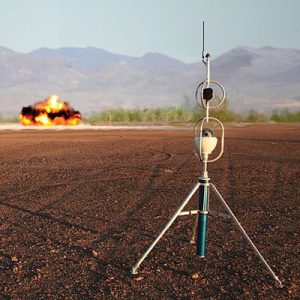
Chris Connors, CEO of Shooter Detection Systems, is no stranger to the efficacy of electronic security. His earliest experience in shot detection system use involved leveraging it to help troops avoid sniper fire during the Gulf War (1990-91). When others didn’t see the viability of such systems for commercial use, Connors did. That need became especially prevalent to Connors following the Sandy Hook shooting, as he noted, “I knew I had an obligation to do whatever I could to bring this lifesaving technology home.”
Today, Connors provides shot detection systems (SDS) for a wide range of industries and is working to get the word out that they aren’t just for military use. They are everyday tools which help improve the safety of our schools, businesses, hospitals and more. Connors puts it best, stating, “As more people learn about gunshot detection, they see it as a logical, lifesaving solution that we believe will become a standard building security technology.”
How Shot Detection Systems Work and Why You Need Them
Connors describes his shot detection system as a “smoke alarm for gunfire.” His technology works off a small sensor, about the size of a light switch plate, which is capable of validating gunfire through both sight and sound. Essentially, sensors listen for sounds of gunfire and look for the infrared flash of a weapon. If both are detected, an alert is triggered for building occupants and first responders. The entire process takes less than a second.
Connors also points out how such systems can work with other security devices like surveillance, access control, critical communications and more. This integration provides vital information to both building occupants and first responders and even allows them to automatically lock down parts of a building to restrict a shooter’s movements.
As to why these systems are so necessary, Connors does the math. He reports that most active shooter situations are over in only 5 to 7 minutes, with one death occurring every 5 to 15 seconds. The ability to alert first responders rapidly is critical for saving lives. However, in many active shooter situations, response times may be slow. Individuals may not be able to get to a phone, or they might not even assume the responsibility of making the call as there are no protocols in place. Those in the area near the shooter may not evacuate as they don’t hear the shots or don’t recognize them for what they are. This delays their ability to escape or reach out for help, which can have devastating effects.
Avoiding False Alarms While Improving Rapid Response
Active shooter systems save lives, which makes them seem like an obvious solution for preventing and mitigating active shooter situations. However, many have concerns regarding false alarms and how they can disrupt business. Connors points to one humorous incident he dealt with, where a competitor’s client called out concern that the sound of high heeled shoes in open spaces would set off the alarm. He initially thought the call was a prank from a college friend before they pointed out it had happened to them before. In this instance, the caller had to empty their entire building due to these false alerts.
Of course, with a system such as SDS, this would not happen. SDS has amassed more than 30 million hours of highly accurate use due to their best in class development and testing. However, as the technology is relatively new and there is limited government regulation, there are fly-by-night operations which don’t leverage proper acoustic and infrared validation to prevent false alarms. Anyone considering a shot detection system should vet it to ensure that it’s capable of telling the difference between a gunshot and an everyday noise like high heels in an open space or a door slamming shut. While no system can guarantee 0 false alarms, companies can reduce their risk by asking questions about its development.
As the intellectual property from SDS was born as a result of a military operation, Connors and his team of engineers had to meet very rigorous standards. They also sought validation of their specs through various government agencies in the US, UK, and Australia, meaning they had to meet additional criteria. When considering shot detection technology, individuals should look for companies which hold equally high standards to reduce their risk of false alarms.
Today’s shot detection systems are comparable to when fire alarms first went mainstream. When fire alarms were first introduced, they may have been considered a luxury at best or a disruption at worst. Over time, SDS realized how essential such systems were to getting people out of buildings safely in the event of a fire. Active shooter systems will likely go the same way.
At their heart, these active shooter systems are about the information they’re able to disseminate in real time. Providing this information to building occupants and first responders speeds response. Connors put it best, stating, “When you do the math on the massive devastation that an active shooter can accomplish in a short time, you start to realize how important it is to shave time off your initial response by any means to save lives.” Shooter Detection Systems offers the best way to cut response time significantly and save lives as a result.
Chris Connors and his team at Shooter Detection Systems provides the gold standard in shot detection technology to clients in a diverse set of industries, from schools and government agencies to private enterprises. He works with many of 3Sixty Integrated’s clients in providing integrated shot detection technology and other solutions. For more information, call (210) 545-1770 or fill out our contact form.

